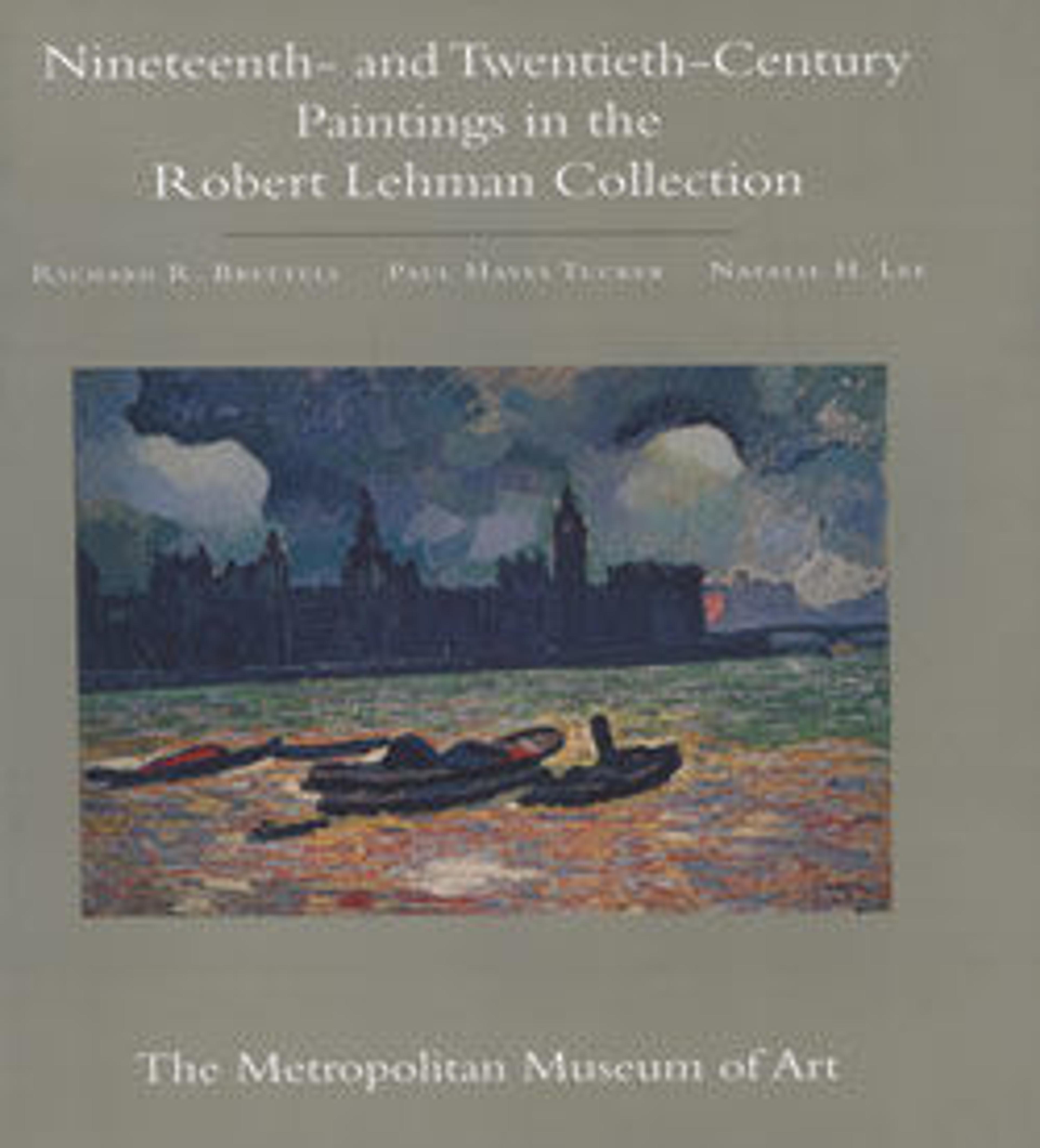Landscape in the South (Le Cannet)
Bonnard was a founding member of a group of artists called the Nabis (Hebrew for “prophet”). Once the group began to disintegrate after 1900, Bonnard found inspiration from the Fauve artists who worked in vibrant color. As seen in the Lehman canvas, Bonnard thus began to experiment with the ornamental and aesthetic potential of color.
The lush green footpath in the foreground defines the receding space of this luminous, mosaic-like landscape. On the left, Bonnard shows an orange-roofed house and behind it what appears to be white, square facades of distant buildings. The surface of the canvas is a patchwork of broken brushstrokes that increase in density in the upper register, stretching into horizontal bands that define the distant horizon. The color is bright and vigorously applied, as Bonnard overlays pigments to create bold, textured patterns through tone.
The lush green footpath in the foreground defines the receding space of this luminous, mosaic-like landscape. On the left, Bonnard shows an orange-roofed house and behind it what appears to be white, square facades of distant buildings. The surface of the canvas is a patchwork of broken brushstrokes that increase in density in the upper register, stretching into horizontal bands that define the distant horizon. The color is bright and vigorously applied, as Bonnard overlays pigments to create bold, textured patterns through tone.
Artwork Details
- Title:Landscape in the South (Le Cannet)
- Artist:Pierre Bonnard (French, Fontenay-aux-Roses 1867–1947 Le Cannet)
- Date:ca. 1943
- Medium:Oil on canvas
- Dimensions:25 1/4 x 28 in. (64.1 x 71.1 cm)
- Classification:Paintings
- Credit Line:Robert Lehman Collection, 1975
- Object Number:1975.1.158
- Rights and Reproduction:© 2025 Artists Rights Society (ARS), New York
- Curatorial Department: The Robert Lehman Collection
More Artwork
Research Resources
The Met provides unparalleled resources for research and welcomes an international community of students and scholars. The Met's Open Access API is where creators and researchers can connect to the The Met collection. Open Access data and public domain images are available for unrestricted commercial and noncommercial use without permission or fee.
To request images under copyright and other restrictions, please use this Image Request form.
Feedback
We continue to research and examine historical and cultural context for objects in The Met collection. If you have comments or questions about this object record, please contact us using the form below. The Museum looks forward to receiving your comments.
